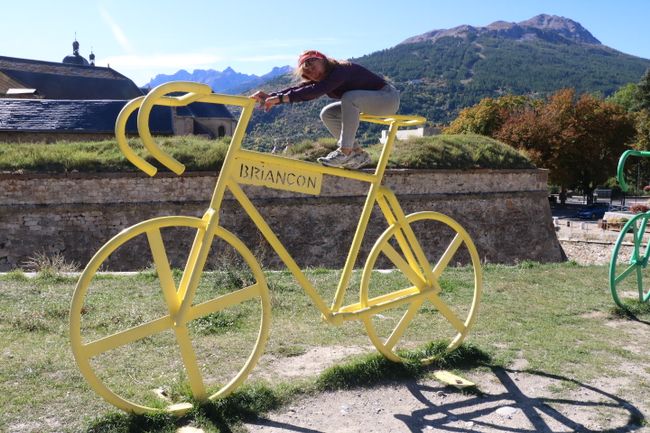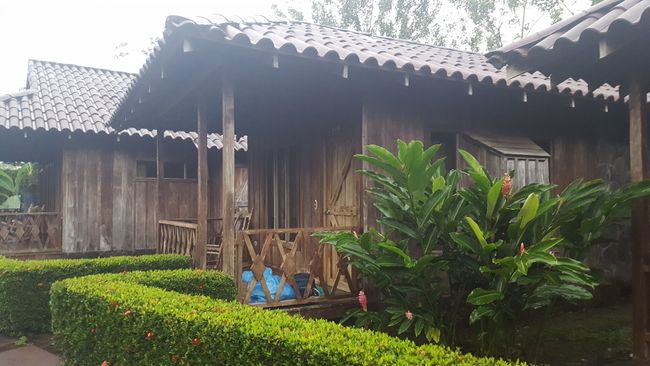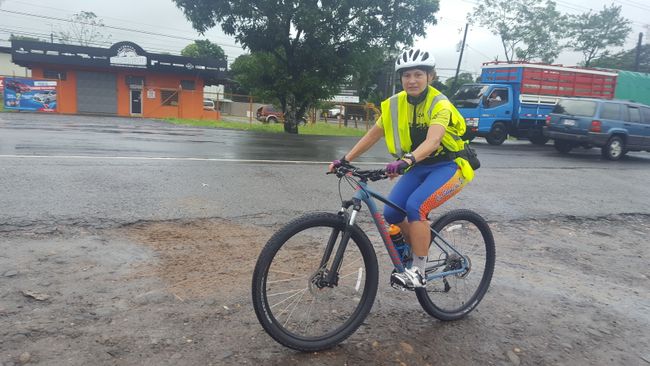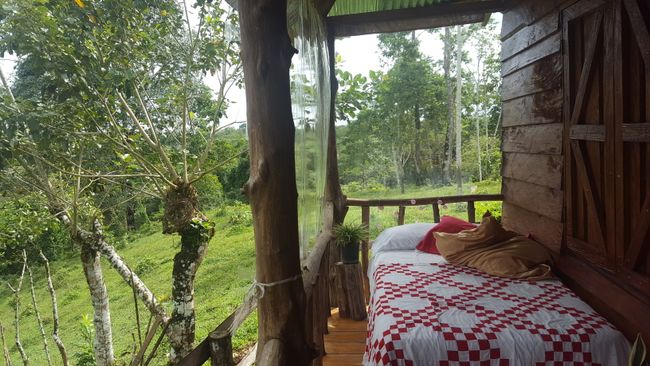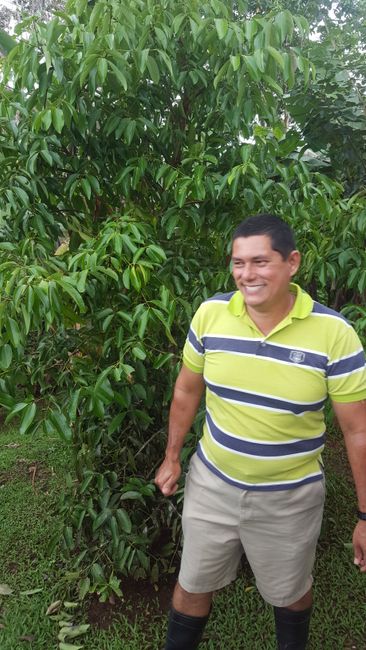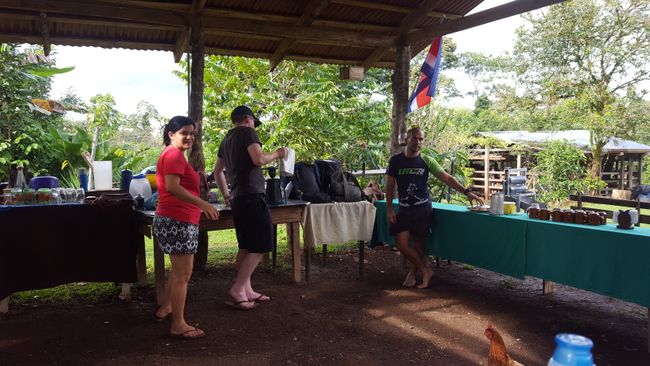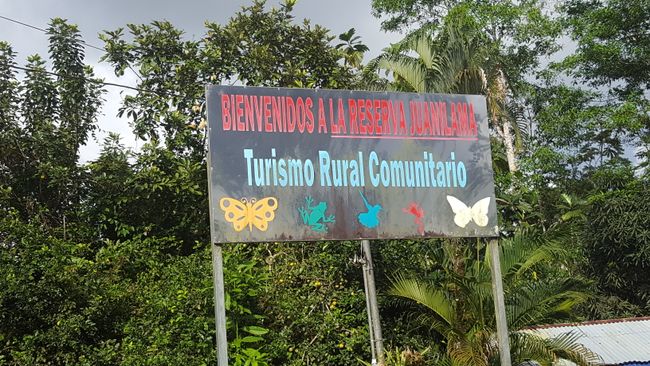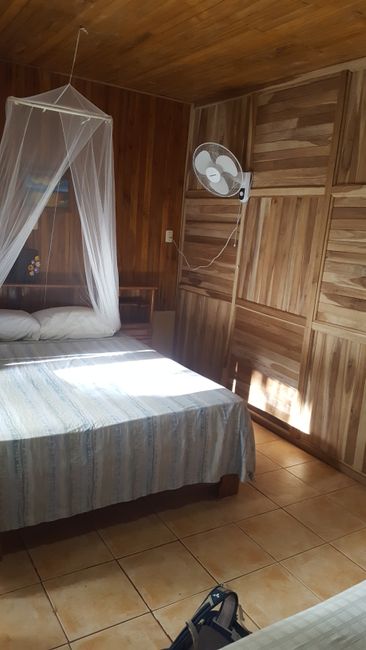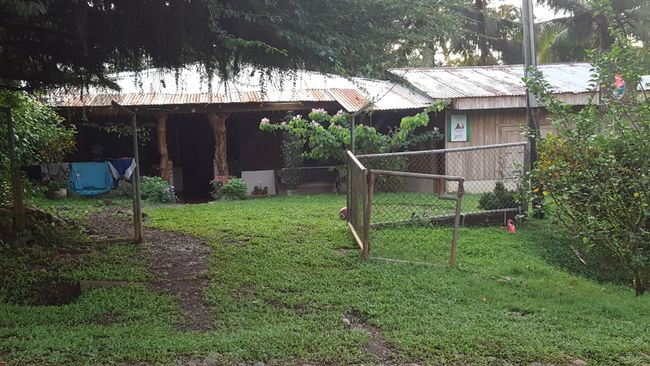0.12.2019 from La Fortuna to Juanilama
ຈັດພີມມາ: 20.12.2019
ຈອງຈົດຫມາຍຂ່າວ
It poured heavily last night. It is still raining heavily when we start cycling after breakfast. Strong headwinds add to the challenge. The first 25 km are flat. Today we will be riding the entire route on paved, busy roads.
But it's going quite well and halfway through the rain starts to let up, and in the end it even stops completely. The last 10 km are very hilly. And then we are in Santa Rosa and that's it for cycling. Today's total distance was 45 km.
From there, we continue by bus to the small town of Juanilama. We won't be staying in hotels there, but in rooms of private individuals.
Six of us will be accommodated in the first house, with Francesca, and three of us will sleep at Elena's. I will be staying with her and the two boys.
I will have a single room with my own bathroom again. The travel description said that there would be shared showers and toilets and that we would have to share multi-bed rooms. So it's surprisingly comfortable. And the internet works here too.
We have lunch at Ellie's. Everything is homemade with vegetables from the garden. Lots of choices, very delicious, and we can eat as much as we want.
Then there is a little tour and explanations about the town of Juanilama. 29 years ago, there was a farm here that was operated by one person. He wanted to sell it. The state bought it and distributed 6 hectares to 125 households in need of land. There was no road, electricity, or water. The only way to get to Juanilama was by horse. After 6 years, the town had infrastructure with water, electricity, and an unpaved road. The water is 100% drinkable and comes from the mountains.
There is also a 19-hectare forest that belongs to everyone. At first, there were no rules and trees were cut down and animals were hunted as pleased. Hunting is prohibited in Costa Rica, but here, people did it anyway because it's so remote. Then rules for preserving the forest were introduced.
Afterwards, we go on a little tour of an agricultural estate. We try Juanilama, a type of mint after which the town is named. And lemongrass. For the first time, I see a cinnamon tree, whose bark is used for seasoning. Carlos shows us some fruits, like guava. They are wrapped in a plastic bag because there is an insect here that stings the fruit and it gets ruined. We see bananas, yucca, pineapples, and pepper plants. With yucca, you just bury a small branch in the ground and the tree grows in a short time. After one year, the plant can be harvested. You eat the root. The pineapple harvest can take place here every 8-12 months because there is no artificial fertilization. On large plantations that use chemicals, you can harvest twice as often. The pepper plant lives together with a tree. It is a parasite, can live up to 20 years, and is very susceptible to diseases. Coffee is also grown here, but only for personal use. Due to the altitude of about 700 m, the coffee here is not as good. It is usually grown at higher elevations.
Afterwards, there is a taste test of coffee or tea with lemongrass, as well as corn and cheese biscuits. Delicious.
Then we go back to our assigned houses. The young son of the family has a small chicken (15 days old) as a pet. It poops right in front of us.
For dinner, we go back to Ellie's.
ຈອງຈົດຫມາຍຂ່າວ
ຄໍາຕອບ
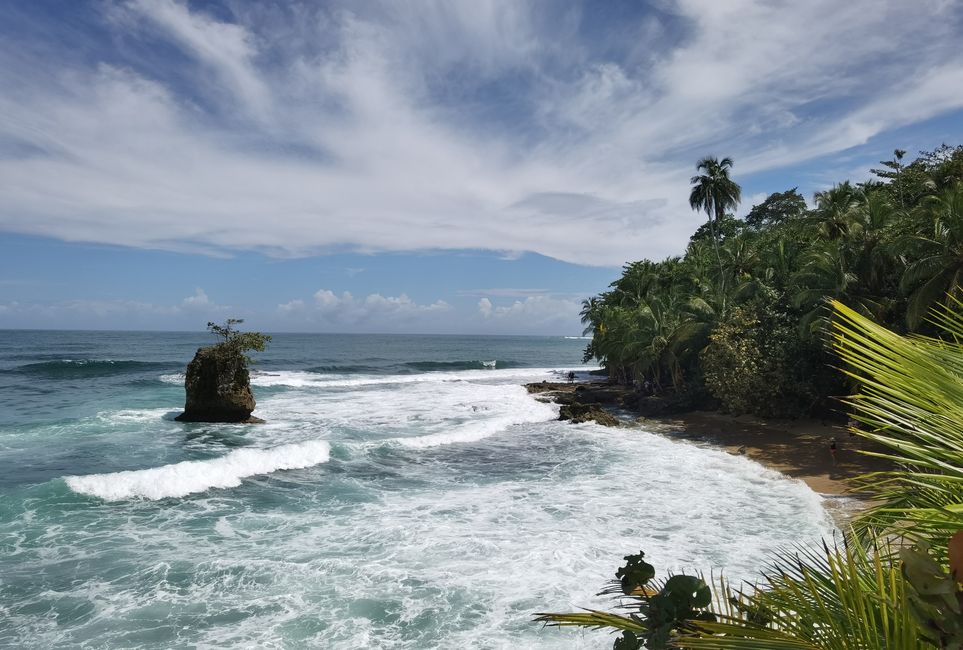
ລາຍງານການເດີນທາງ Costa Rica

